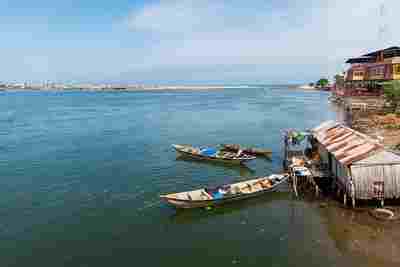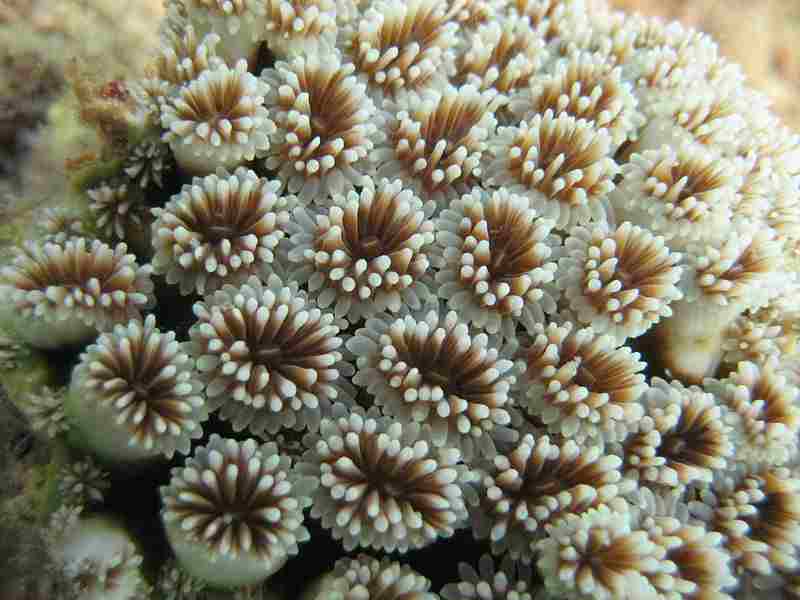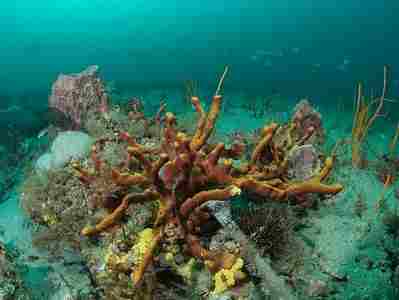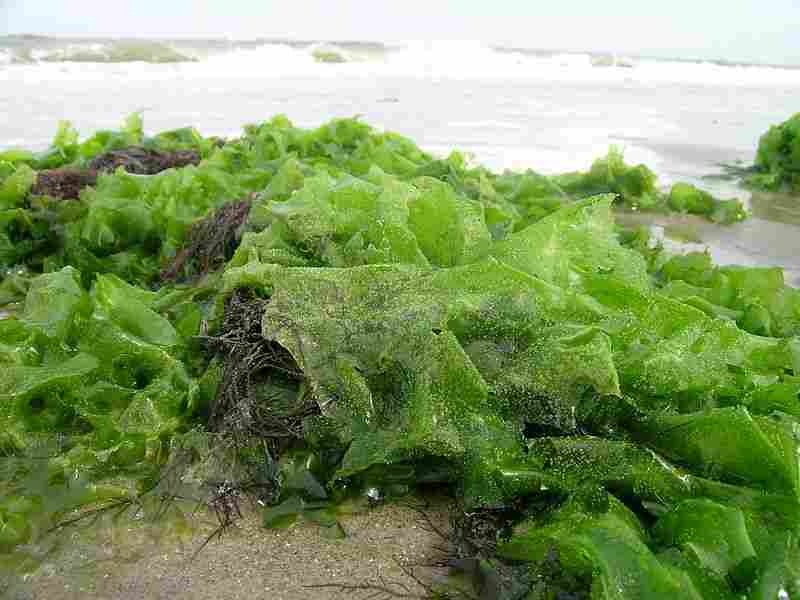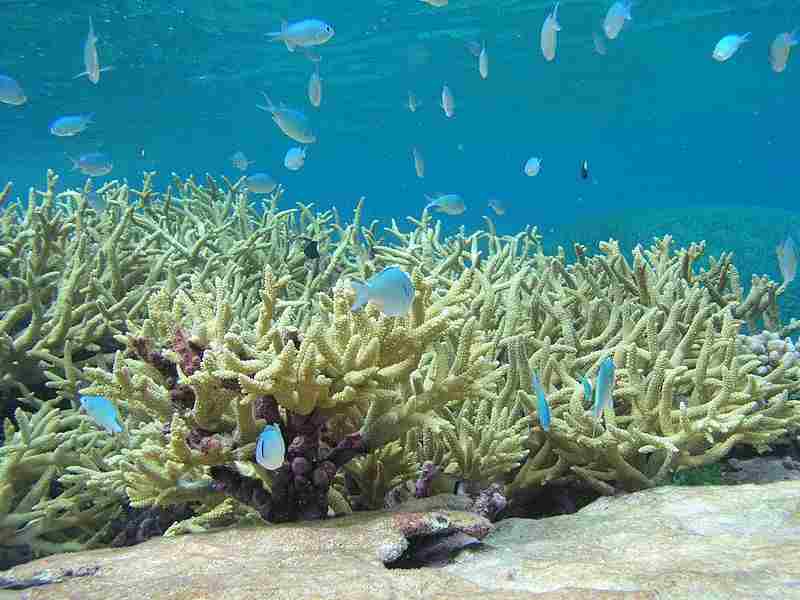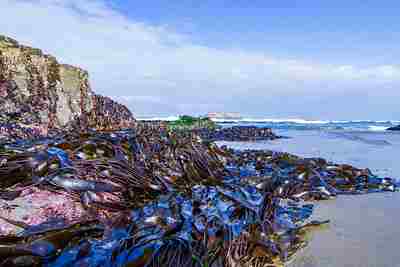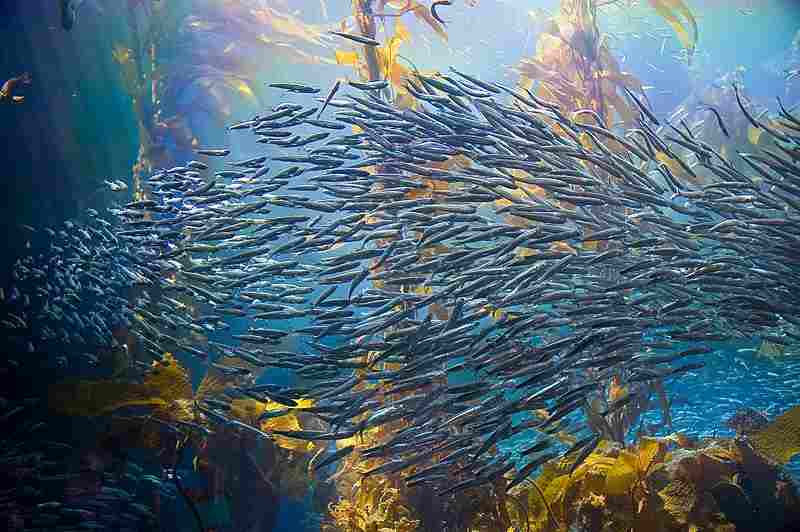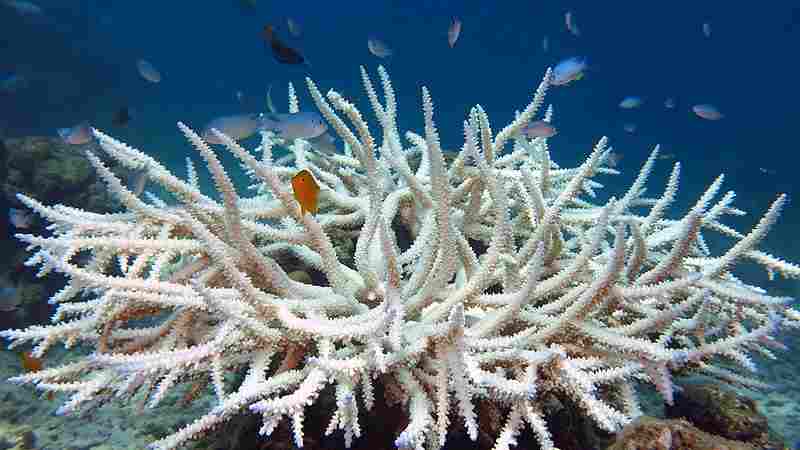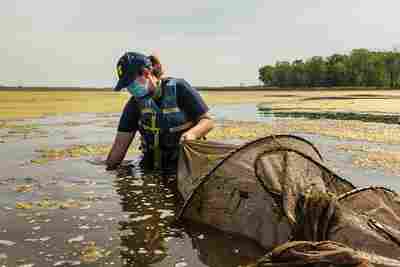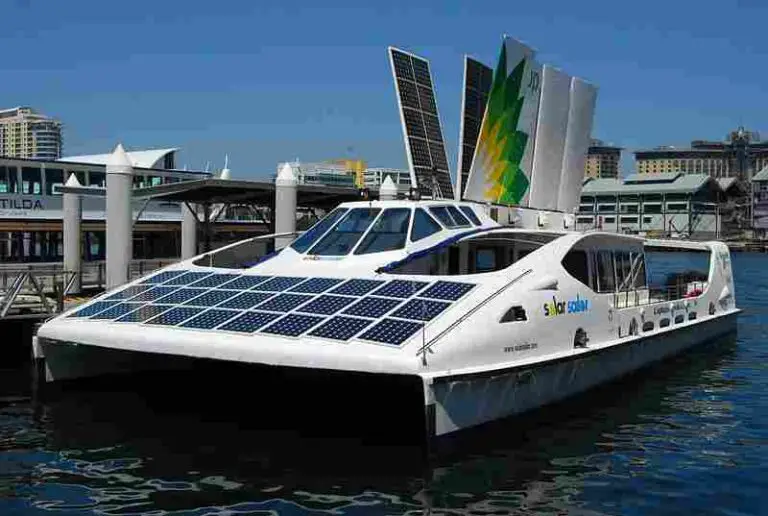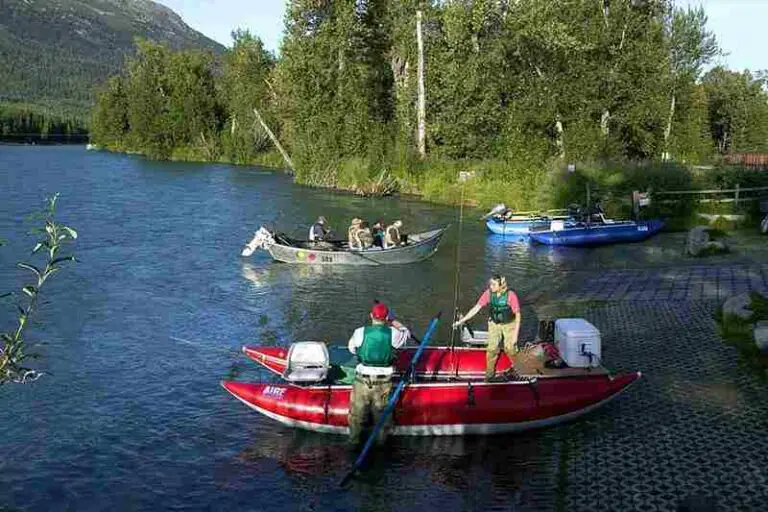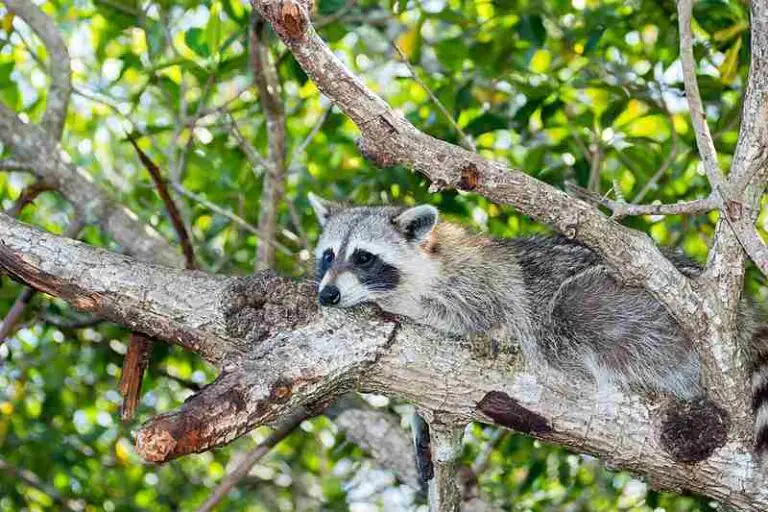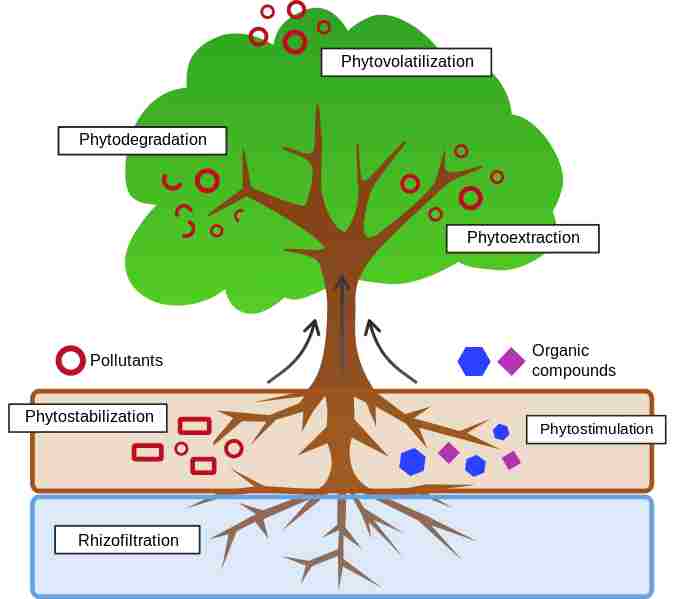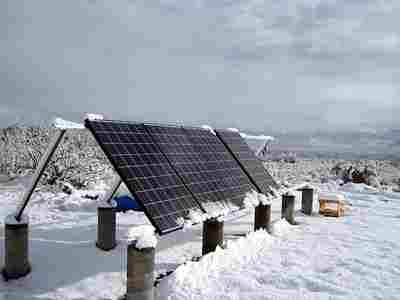11 Types of Coastal Ecosystems and Their Characteristics
Types of coastal ecosystems are; seagrass meadows, bays, kelp forests, shallow coral reefs, estuaries, salt marshes, mangrove swamps, sandy beaches, lagoons, rocky shores, and intertidal mudflats.
This article discusses the types of coastal ecosystems, and shows the similarity of characteristics, importance, threats and conservation among these ecosystems, as follows;
1). Seagrass Meadows: One of the Types of Coastal Ecosystems
Some characteristics of seagrass mangroves are; underwater grass dominance, distinctive marine life, sedimentary stability, and water quality control.
Seagrass meadows are underwater ecosystems composed of seagrasses, not actual grasses but related plants.
They provide critical habitat for various marine species, including fish, crustaceans, and invertebrates. Seagrasses also help stabilize sediments, reducing coastal erosion and protecting shorelines.
They improve water clarity and quality by trapping sediments and filtering pollutants.

Importance of seagrass meadows include their roles as habitat and nursery, support of immense aquatic biodiversity, carbon sequestration function, and recreational opportunities.
Seagrass meadows serve as vital habitat and nursery grounds for many fish, invertebrates, and other marine life, aiding in their life cycles. These ecosystems support a diverse range of species, contributing to coastal biodiversity.
Seagrasses also store carbon in their biomass and sediments, aiding in climate change mitigation.
They are popular for snorkeling, diving, and boating, contributing to tourism and local economies.
Threats to, and Conservation of, Seagrass Meadows
Threats to seagrass meadows as one of the types of coastal ecosystems; include urbanization, coastal development, boating and anchoring activities, as well as climate change.
Urbanization and coastal construction can lead to habitat destruction and water quality degradation. Runoff from agriculture and urban areas can also introduce excess nutrients, leading to seagrass decline.
Vessel traffic and anchoring can damage seagrass beds.
Also, rising temperatures and sea levels can stress seagrasses and disrupt their ecosystems.
Conservation of seagrass meadows is achievable through delineation and protection of most sensitive areas, sustainable practices, water quality conservation, and climate resilience-boosting measures. The guidelines are as follows;
Establish protected areas to preserve seagrass habitats and limit human impact.
Promote responsible boating and fishing practices to minimize seagrass damage.
Restore degraded seagrass habitats to enhance their ecological functions.
Implement measures to reduce nutrient pollution and maintain water quality.
Address climate change impacts through conservation and coastal management strategies.
2). Bays
Characteristics of bays as one of the types of coastal ecosystems include; sheltered water areas, uniquely adapted organisms, and sediment accumulation. Like other types of coastal ecosystems, they can also be used for recreational purposes. These are further discussed as follows;
Bays are semi-enclosed coastal areas with calmer waters due to protection from the open ocean. They support diverse marine life, offering habitat for fish, invertebrates, and mollusks.
Bays often accumulate sediments, influencing coastal geomorphology and providing valuable habitat.
Also, bays are popular for boating, swimming, and other water-based recreational activities.
The importance of bays include habitat and nursery provision, biodiversity support, water filtration, fishery support, and coastal storm protection.
Bays serve as critical habitat and nursery grounds for many marine species, aiding in their life cycles.
These ecosystems contribute to biodiversity, supporting various species in their diverse habitats.
Also, bays filter and purify water, improving water quality by trapping sediments and pollutants. They support fisheries, contributing to local economies and providing food resources.
Bays can reduce the impact of storm surges, protecting coastal communities.
Threats to bays include habitat degradation, environmental pollution, overfishing, climate change, and the proliferation of resilient invasive species.
Urban development and land reclamation can destroy or degrade bay habitats.
Runoff from urban areas and agriculture can introduce pollutants into bay waters.
Unsustainable fishing practices can deplete fish populations and disrupt the food web.
Rising sea levels and increased storm frequency pose threats to bay ecosystems.
Non-native species can outcompete or disrupt native bay species.
Guidelines for the conservation of bays must cover issues af areal protection, elaborate habitat restoration, water quality management, and erosion control. These are outlined below;
Establish protected areas within bays to preserve critical habitats and limit human impact.
Promote sustainable fishing and boating practices to reduce negative impacts on bay ecosystems.
Restore degraded habitats and wetlands within bays to enhance their ecological functions.
Management: Implement measures to reduce pollution and maintain water quality in bays.
Develop strategies to mitigate coastal erosion and protect shorelines within bay areas.
3). Kelp Forests: One of the Types of Coastal Ecosystems
As coast ecosystems, the characteristics of Kelp Forests include presence of underwater algae, vertical structuring, distinctive biodiversity, and significant oxygen production. They are discussed as follows;
Kelp forests are underwater ecosystems dominated by large, brown algae known as kelp. Kelp grows in dense stands, forming a three-dimensional forest-like structure in the water.
These ecosystems also support a wide range of marine life, including fish, invertebrates, and mammals. Kelp is a primary producer, which contributes to oxygen production through photosynthesis.

The importance of kelp forests ranges from habitat provision to fishery sustenance, carbon storage, coastal protection and recreational opportunities. These are outlined below;
Kelp forests provide essential habitat and shelter for various marine species, promoting biodiversity. They support fisheries by offering spawning and feeding grounds for commercially valuable species.
Kelp forests also sequester carbon, helping mitigate climate change by storing atmospheric CO2.
Kelp helps reduce the impacts of coastal erosion and storm surges, protecting coastlines.
They are popular destinations for diving and snorkeling, contributing to tourism.
Threats to kelp forests include; climate change, overfishing, pollution, and out-competition of native organisms by invasive species.
Rising ocean temperatures and ocean acidification can stress kelp populations.
Excessive harvesting of herbivores that graze on kelp can also disrupt the ecosystem.
Pollution and nutrient runoff can negatively impact kelp and the surrounding ecosystem.
Non-native species can outcompete native kelp species and disrupt the ecosystem.
Conservation of the coastal ecosystem is achievable with efforts to protect vulnerable marine areas, practice sustainable harvesting, implement climate resilience-boosting measures, as well as monitoring and research. This is elaborated in the following list of guidelines;
Establish protected zones to conserve kelp forests and limit human impact.
Implement regulations for sustainable harvesting practices to prevent overexploitation.
Address climate change impacts through conservation and coastal management strategies.
Continue research to better understand kelp ecosystems and develop effective conservation measures.
4). Shallow Coral Reefs
Characteristics of shallow coral reefs include, presence of hard coral structures, high biodiversity, colorful ecosystems, and shallow depth.
Shallow coral reefs are built by hard corals that secrete calcium carbonate skeletons.
They support a vast array of marine life, including fish, invertebrates, and various coral species.
Coral reefs are also known for their vibrant and colorful underwater landscapes. Found in relatively shallow waters, typically in the tropical and subtropical regions.
Importance of shallow coral reefs can be discussed within various contexts, including biodiversity sustenance, marine fisheries; coastal conservation, recreation, tourism, and scientific research.
Coral reefs are among the most biodiverse ecosystems, providing habitat and food for countless species.
They support fisheries by serving as breeding and feeding grounds for commercially valuable fish.
Coral reefs act as natural barriers, reducing wave energy and protecting coastlines from erosion and storms.
They are also popular for snorkeling, diving, and tourism, boosting local economies.
Lastly, coral reefs are valuable for ecological research, aiding in marine ecology and conservation efforts.
Threats to coral reefs arise from issues like coral bleaching, over-abstraction, pollution, and destructive practices.
Rising sea temperatures and ocean acidification can lead to coral bleaching and reef degradation.
Unsustainable fishing practices can deplete fish populations and disrupt the coral reef ecosystem.
Land-based pollution, including runoff and marine debris, can harm coral reefs.
Also, practices like dynamite fishing and anchor damage can physically harm coral reefs.
Conservation of coral reefs requires protection of some sensitive zones, sustainable fishing, climate resilience optimization, coral restoration, education and awareness. The following guideline provides further detail;
Establish and enforce protected areas to conserve coral reefs and limit human impact.
Implement regulations and practices for sustainable fishing to prevent overexploitation.
Address climate change impacts through conservation and coral restoration efforts.
Develop coral propagation and restoration programs to rebuild damaged reefs.
Raise awareness and educate the public about the importance of coral reef conservation.
5). Estuaries: One of the Types of Coastal Ecosystems
Characteristics of estuaries as one of the types of coastal ecosystems, include; presence of transitional zones, brackish water conditions, high productivity, and variable salinity.
Estuaries are where freshwater rivers and streams meet and mix with saltwater from the ocean. They have a mixture of freshwater and saltwater, resulting in slightly saline or brackish conditions.
Estuaries also support a high level of primary productivity due to nutrient-rich runoff from land.
Salinity levels in estuaries can vary with tides, seasons, and freshwater inputs.
Importance of estuaries include their functions as nursery grounds, biodiversity hotspots, water filtration systems, fishery support, and storm protection.
Estuaries serve as critical nursery grounds for many fish and marine species, supporting their early life stages.
They host a wide range of species, making them ecologically diverse and important for marine life.
Estuaries also filter and purify water, improving water quality by trapping sediments and pollutants.
They support fisheries, contributing to local economies and providing food resources.
Lastly, estuaries can reduce the impact of storm surges, protecting coastal communities.
Threats to estuaries include ecosystem degradation, pollution, overfishing, climate change, and invasive species.
Urban development and land reclamation can destroy or degrade estuary habitats.
Runoff from urban areas and agriculture can introduce pollutants into estuary waters.
Unsustainable fishing practices can deplete fish populations and disrupt the food web.
Rising sea levels and increased storm frequency pose threats to estuary ecosystems.
Non-native species can outcompete or disrupt native estuary species.

Conservation of estuaries required delineation and areal protection, sustainable practices, habitat restoration, water quality management, and effective erosion control. The guidelines are stated below;
Establish protected areas within estuaries to preserve critical habitats and limit human impact.
Promote sustainable fishing and boating practices to reduce negative impacts on estuary ecosystems.
Restore degraded habitats and wetlands within estuaries to enhance their ecological functions.
Implement measures to reduce pollution and maintain water quality in estuaries.
Develop strategies to mitigate coastal erosion and protect shorelines within estuary areas.
6). Salt Marshes
Characteristics of salt marshes as a type of coastal ecosystem, include the occurrence of intermittent flooding, presence of halophytic vegetation, tidal influence, as well as muddy and silty substrates.
Salt marshes are coastal wetlands that are periodically inundated by saltwater.
They are also characterized by salt-tolerant plants like cordgrass and saltwort.
Salt marshes are influenced by tidal action, with daily inundation by rising tides.
They typically have muddy or silty substrates, rich in organic material.
The importance of salt marshes include habitat and nursery provision, sediment stabilization, water filtration, carbon sequestration, recreational an educational value. This is outlined below;
Salt marshes serve as critical habitat and nursery grounds for various fish and invertebrate species, supporting biodiversity.
They help stabilize sediments and reduce coastal erosion, protecting shorelines.
Salt marshes filter and purify water, improving water quality by trapping sediments and pollutants.
They store carbon in their vegetation and sediments, aiding in climate change mitigation.
Also, salt marshes offer opportunities for recreational activities, wildlife observation, and environmental education.
Threats to salt marshes may be in the form of habitat destruction, pollution, sea level rise, and invasive species.
Urban development and land reclamation can lead to the loss or degradation of salt marsh habitats.
Runoff from urban and agricultural areas can introduce pollutants and nutrients, harming salt marsh ecosystems.
Rising sea levels can lead to increased saltwater intrusion and inundation of salt marshes.
Non-native species can outcompete or disrupt native salt marsh vegetation.
The conservation of pf salt marshes involves habitat protection, wetland restoration, water quality management, climate adaptation, education and outreach. Some guidelines are given below;
Establish and enforce protected areas and regulations to conserve salt marsh habitats.
Restore degraded or damaged salt marsh areas to enhance their ecological functions.
Implement measures to reduce pollution and maintain water quality in salt marshes.
Develop strategies to address the impacts of sea-level rise and climate change on salt marsh ecosystems.
Raise awareness and educate the public about the importance of salt marsh conservation.
7). Mangrove Swamps/Forests: One of the Types of Coastal Ecosystems
As one of the types of coastal ecosystems, mangrove swamps are characterized by salt-tolerant trees, brackish or saline water, muddy substrates, and prop roots; among other biotic and abiotic attributes.
Mangrove swamps play host to salt-tolerant trees and shrubs adapted to coastal, brackish waters.
They thrive in areas with fluctuating salinity levels, influenced by tides and freshwater inputs.
Mangrove habitats often have muddy, silty substrates rich in organic matter. Also, mangrove trees often have distinctive prop roots that help stabilize them in the soft substrate.
Importance of mangrove swamps can be discussed within various contexts which may include terms like; coastal protection, nursery grounds, biodiversity sustenance, carbon sequestration, recreational and educational uses.
Mangrove swamps act as natural barriers, reducing the impact of storm surges and coastal erosion, protecting coastlines.
They serve as essential nursery grounds for numerous fish, crustaceans, and other marine species, supporting fisheries.
Mangrove ecosystems host a wide range of species, contributing to biodiversity and coastal ecology.
They store carbon in their biomass and sediments, aiding in climate change mitigation by trapping atmospheric CO2.
Mangrove swamps are popular for eco-tourism activities like kayaking and wildlife viewing, boosting local economies.
Threats to mangrove forests/swamps include imminent habitat destruction, pollution, overharvesting, resource depletion and climate change.
Urban development, aquaculture, and agriculture can lead to the destruction of mangrove habitats.
Polluted runoff from human activities can introduce contaminants and nutrients into mangrove ecosystems.
Overharvesting of mangrove wood and other resources can lead to habitat degradation.
Rising sea levels and temperature changes can stress mangrove populations and disrupt their ecosystems.
Conservation of mangrove swamps includes themes like marine area protection, sustainable ecological practices, habitat restoration, water quality management, and climate resilience-building. These are outlined in a guideline format below;
Establish protected areas within mangrove swamps to preserve critical habitats and limit human impact.
Promote sustainable resource management to prevent overexploitation of mangrove resources.
Restore degraded mangrove habitats to enhance their ecological functions.
Implement measures to reduce pollution and maintain water quality in mangrove ecosystems.
Address climate change impacts through conservation and coastal management strategies.
8). Sandy Beaches
Sandy beaches are coastal ecosystems with various characteristics including presence of sandy shorelines, intertidal zone linkage, dynamic environment conditions, and limited vegetation.
Sandy beaches are composed of loose sand and are influenced by wave action. They are part of the intertidal zone, with varying exposure to tides and waves.
Also, sandy beaches are constantly shaped and reshaped by wind, waves, and currents. They typically have limited vegetation, with dune systems found in some areas.
The importance of sandy beaches can be traced to their relevance as recreational sites, habitat for wildlife, erosion control systems, themes of scientific study, and aesthetically valuable terrains.
Sandy beaches are popular for sunbathing, swimming, and a variety of recreational activities, contributing to tourism.
They provide habitat for various species, including shorebirds, crabs, and nesting sea turtles.
Sandy beaches act as natural buffers, reducing coastal erosion and protecting shorelines from storm surges.
They are valuable for research in coastal geology, ecology, and environmental conservation.
Lastly, sandy beaches offer aesthetic beauty, attracting visitors and promoting environmental appreciation.
Threats to sandy beaches come from urbanization, coastal encroachment, human-induced pollution, climate change, and sand mining activities.
Urbanization and tourism infrastructure can lead to habitat destruction and beach erosion. Litter and pollutants from beachgoers can also harm both wildlife and the beach environment.
Rising sea levels and increased storm activity can exacerbate erosion and reshape sandy beaches.
Unsustainable sand extraction for construction can deplete beach resources.
Conservation of sandy beaches requires measures like active habitat protection, erosion control, beach cleanup, public awareness building, and climate resilience building. The guidelines below elaborate further;
Establish and enforce regulations to protect natural beach habitats from development and destruction.
Implement strategies such as beach nourishment to mitigate coastal erosion and maintain sandy beaches.
Promote and participate in beach cleanup activities to reduce pollution and litter.
Educate the public about the importance of responsible beach behavior and conservation efforts.
Address climate change impacts through conservation and coastal management strategies.
9). Lagoons: One of the Types of Coastal Ecosystems
Some characteristics of lagoons include shallow water depth, enclosed or partially enclosed conditions, varying salinity, and adapted vegetation.
Lagoons are characterized by shallow, often brackish or saline water, located near the coast. They can be completely enclosed by barrier islands or partially open to the sea.
Salinity levels in lagoons can vary with tides, seasons, and freshwater inputs.
Also, lagoons may host aquatic plants, marshes, and mangroves, depending on their location.
Importance of lagoons include their roles as nurseries and habitats, water filtration systems, recreational sites, and subjects of scientific research.
Lagoons serve as vital habitat and nursery grounds for various fish, invertebrates, and birds, supporting biodiversity.
They help improve water quality by trapping sediments and filtering contaminants, benefiting coastal ecosystems.
Lagoons offer opportunities for boating, fishing, and wildlife viewing, boosting tourism and local economies.
They are valuable for research in ecology, hydrology, and environmental conservation.
Threats to lagoons include extensive habitat degradation, pollution, invasive species proliferation, and climate change.
Urban development and land reclamation can destroy or degrade lagoon habitats.
Runoff from urban areas and agriculture can introduce pollutants into lagoon waters.
Non-native species can outcompete or disrupt native lagoon species.
Rising sea levels and increased storm frequency pose threats to lagoon ecosystems.

Guidelines for effective conservation of lagoons must make reference to marine area protection, sustainable fishing and boating, habitat restoration, pollution reduction, and addressing climate change impacts. Below are such guidelines.
Establish protected areas within lagoons to preserve critical habitats and limit human impact.
Promote sustainable fishing and boating practices to reduce negative impacts on lagoon ecosystems.
Restore degraded habitats and wetlands within lagoons to enhance their ecological functions.
Implement measures to reduce pollution and maintain water quality in lagoons.
Address climate change impacts through conservation and coastal management strategies.
10). Rocky Shores
Some attributes of rocky shore coastal ecosystems include the presence of hard substrate, intertidal connectivity, variable abiotic conditions, as well as diverse algae and other organisms.
Rocky shores are coastal areas with solid rock or hard substrates exposed to wave action. They are part of the intertidal zone, experiencing tidal fluctuations and wave exposure.
Also, rocky shores face changing conditions, from underwater at high tide to exposure at low tide.
They often host diverse algae, barnacles, mussels, and other intertidal organisms.
Importance of rocky shores include their contribution to the support of biodiversity, scientific studies, recreation and education, reduction of coastal erosion, and coastal aesthetic value.
Rocky shores support a wide range of intertidal and subtidal marine life, contributing to coastal biodiversity.
They are valuable for scientific research in marine biology, ecology, and conservation.
Rocky shores also offer opportunities for tidepool exploration, research, and environmental education.
Rocky shores can reduce coastal erosion and provide habitat for intertidal organisms.
They offer scenic beauty and opportunities for coastal appreciation, attracting visitors and promoting environmental awareness.
Threats to rocky shore ecosystems include habitat degradation by human interference and development, pollution from agriculture and urban areas, disruption by invasive species, and sea-level changes due to global warming.
Human activities, such as trampling and urban development, can disrupt or destroy rocky shore habitats.
Runoff from urban areas and industrial sites can introduce pollutants into rocky shore ecosystems.
Non-native species can outcompete or disrupt native rocky shore species.
Rising sea levels and temperature changes can impact rocky shore organisms and ecosystems.
Conservation of rocky shores is possible through the establishment of protected areas; promotion of responsible exploration, restoration of deteriorating habitats, maintenance of water quality, and general coastal management. The guidelines are as follows;
Establish protected areas to preserve rocky shore habitats and limit human impact.
Promote responsible coastal exploration and protection of rocky shore ecosystems.
Restore degraded habitats and intertidal zones to enhance their ecological functions.
Implement measures to reduce pollution and maintain water quality along rocky shores.
Address climate change impacts through conservation and coastal management strategies.
11). Intertidal Mudflats: One of the Types of Coastal Ecosystems
As one of the types of coastal ecosystems, intertidal mudflats possess attributes such as the presence of muddy substrate, significant tidal influence, biodiversity, and critical terrestrial-marine transition.
Intertidal mudflats are characterized by soft, muddy substrates, exposed during low tide. They typically experience regular tidal fluctuations, with areas submerged and exposed daily.
Mudflats host a diverse community of invertebrates, including worms, clams, and crabs.
They serve as a transition zone between terrestrial and marine environments.
The importance of intertidal mudflats encompasses their functions in habitat and food provision, nursery ground provision, water filtration, as well as scientific knowledge provision.
Mudflats provide essential habitat and a food source for various shorebirds, fish, and crustaceans.
They serve as crucial nursery areas for fish and invertebrates, supporting the life cycles of many species.
Mudflats help improve water quality by filtering sediments and contaminants from the water.
They are valuable for ecological research, particularly in studying intertidal ecosystems.
Threats to mudflat ecosystems include; habitat destruction through dredging, pollutant influx from adjacent areas, rising sea levels, temperature changes, and excessive harvesting or organisms.
Coastal development, dredging, and land reclamation can lead to the loss or degradation of mudflat habitats.
Runoff from urban areas and agriculture can introduce pollutants into mudflat ecosystems.
Rising sea levels and temperature changes can disrupt the balance of mudflat ecosystems.
Excessive harvesting of mudflat organisms, such as clams, can deplete populations.
Conservation of mudflats required limiting human impact, protecting some vulnerable sections, restoring degraded areas, reducing pollution, and addressing climate change. Below is a guideline outlining these measures;
Establish protected areas to preserve mudflat habitats and limit human impact.
Implement regulations for sustainable harvesting practices to prevent overexploitation.
Restore and protect degraded mudflat areas to enhance their ecological functions.
Implement measures to reduce pollution and maintain water quality in mudflat ecosystems.
Address climate change impacts through conservation and coastal management strategies.
Conclusion
Types of coastal ecosystems are;
1. Seagrass Meadows
2. Bays
3. Kelp Forests
4. Shallow Coral Reefs
5. Estuaries
6. Salt Marshes
7. Mangrove Swamps
8. Sandy Beaches
9. Lagoons
10. Rocky Shores
11. Intertidal Mudflats
